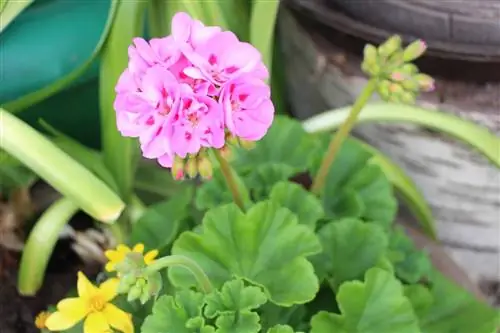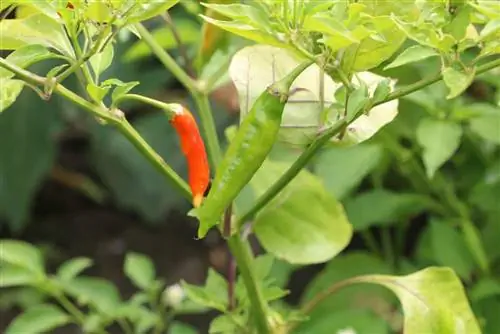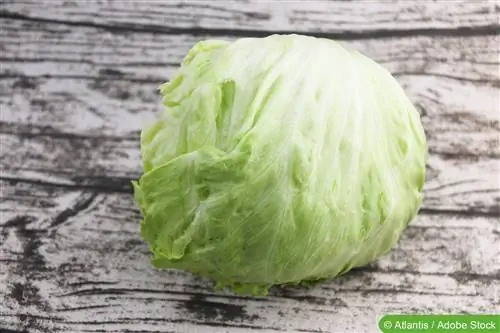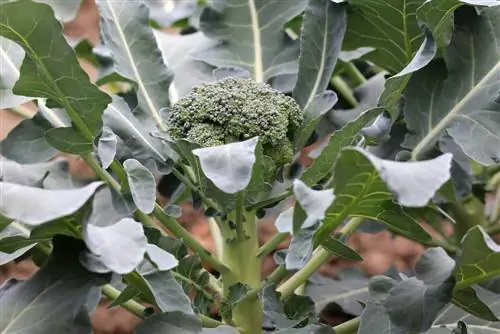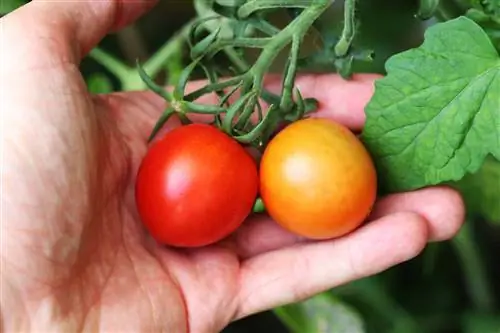- Author admin [email protected].
- Public 2023-12-17 03:39.
- Last modified 2025-01-24 12:45.
Geraniums are not only impressive because of their diversity. Growing this plant is easy and can be carried out over many months of the year - from. Nevertheless, it is important to handle the young plants carefully so that the cultivation is successful. The preparation is a big part of it and the following steps are easy to carry out. You also have a certain amount of leeway when it comes to choosing your cuttings. But plugging alone isn't enough. Care determines whether the flowers will bloom later.
Earth
Geraniums must be placed in the right soil right from the start in order to grow he althy and strong. The soil forms the foundation for the later floral splendor. It is important to choose a high-quality substrate. You can recognize the right soil by its even structure and the loose grain. Poor quality soil often becomes lumpy and muddy when watered. Good geranium soil falls loosely. In addition, the soil should not be too wet. Permanently moist soil destroys the root structure of the geraniums. In addition, the s alt content must not be too high. This affects growth. You shouldn't skimp on money either. In fact, cheap soil is sometimes contaminated, for example with pieces of branches. It's better to invest a euro or two more and get a potting soil that will give you an attractive display of flowers. Nutrient-rich soil is essential for he althy growth. You even get special growing soil. This is unsuitable for use over the entire period. The low nutrient content allows it to be used only in the first few months. This is what the right soil for your geraniums should be like:
- high-quality substrate
- loose soil
- dry ground
- low s alt content
Preparation
Separate the desired seedling from a he althy geranium using a sterile, sharp knife. A clean interface is essential for the he althy development of the plant and important for its water absorption. Cut the seedling slightly diagonally. This promotes sufficient root formation. Cut or pluck the leaves from the stem and remove flowers and buds to give the young plant enough strength for development. Choosing your cuttings shouldn't be difficult because you don't need any specific parts of the plant. Even cuttings that have already been snapped can still be used, but they must be strong enough and be at least 10 cm long, but not much longer than 15 cm. Illnesses must not be present either.
Young geraniums in water
You should not put the cuttings in the ground immediately, but rather make the necessary preparations by growing them in water. Place the cuttings in the container with the liquid for around half an hour. Then place the plants in a pot with the selected soil, preferably individually. You can only put several in one container if the cuttings do not touch each other. The soil only needs to be lightly pressed against the trunk; If necessary, protect the plant from twisting.
Location
Choose a bright place for the plants. Ideally, you will find a sunny location. Place the geraniums in a warm place where the temperature is ideally between 20 and 22 ° C.
Tip:
Choose an east or west window because the sun doesn't shine directly in there. Full sun is not good for the plants.
Care
Keep the soil moist at all times, but be careful not to cause waterlogging. On warm days you can put the young flowers in the pot outside. If you maintain optimal care, the geraniums will expand their roots after three weeks. Don't forget to increase the water supply as the temperature rises, but only so that the water does not build up, otherwise rot will occur. After eight weeks you can transplant the little ones or at least change the substrate.
Sowing
You can sow geraniums yourself. To start, choose a small container and fill it with germ-free soil. Place the seeds on the soil without pressing them firmly. Just add a thin layer of soil over it, as geraniums are light seeders. Maybe you have a clear lid that you place on the pot. This allows enough light to pass through and at the same time ensures the right humidity. Last but not least, you can watch the growth of your geraniums. From the second week after sowing, the lid must be removed at regular intervals to ensure adequate ventilation. You can tell when the time is right to put the young plants in a larger container by looking at their growth status. When you recognize the first four leaves, it's the right time. Place the young plants individually in pots with nutrient-rich soil. It is recommended to use light compost soil. You can later plant the pelargoniums in your garden. The weather is expected to remain stable and no more cold weather is expected. Place the plants in a sunny spot. A good option to get the geraniums used to the changed circumstances is to put the young plants outside during the day on warm days. Sowing is not difficult if you follow the following tips:
- choose a small container to begin with
- germ-free earth
- only cover with a thin layer of soil
- if necessary, place a transparent lid
- from the second week after sowing - remove the lid more often for ventilation
- Put young plants in a larger container when the first four leaves are visible or when the plants touch each other
- don't put in the garden until the weather stays warm
- sunny location
Tip:
Sift the soil before sowing the seeds to loosen it up a little more.
Frequently asked questions
When can geraniums be planted in the garden?
It is important that no more frost is expected. The ideal time to put the plants outside is May. You are safe if the outside temperature remains consistently above 15 °C.
My geraniums aren't growing. Why is that?
Check the soil for excessive moisture. It should also contain sufficient nutrients. You may be using too little fertilizer. The ambient temperature can also be to blame for the lack of growth. Weather that is too cold is not good for geraniums. Another possibility is possible illnesses.
What you need to know about geraniums in brief
Variety variety
Hanging pelargoniums, also known as ivy geraniums, are particularly popular for boxes on the balcony railing, which are available in countless shades of color from red to pink and violet to white. Their long shoots bend over. The selection of varieties for upright or standing pelargoniums is also huge. They don't take a break from blooming until fall. Like all geraniums, they can be overwintered indoors frost-free. Instead of great flowers, foliage pelargoniums have colorful leaves with white, silver or gold-colored patterns. Cactus-flowered, tulip-flowered or star pelargoniums have special flower shapes. Also particularly attractive are the many, often delicate-flowered wild forms and mini pelargoniums, which barely reach a height of more than 10 cm.
Plants
This is what you need: Good potting soil, a clean balcony box (which can have a water reservoir), the selected geraniums, some slow-release fertilizer, a bucket of water, a handy watering can and lots of fun planting.
- Fill in soil: In normal boxes, cover the water drainage holes with shards of pottery and a drainage layer of expanded clay. Boxes with water reservoirs can be filled halfway up with potting soil.
- Insert plants: Carefully remove the young plants from the container pots and, if it is very dry, dip them in water beforehand. Loosen extremely dense roots carefully with your hand.
- Alignment: Add enough soil under the root balls until all the plants are at the same height. Fill the gaps with soil and press down well. Incorporate a handful of slow-release fertilizer.
- Water for growing: water the plants carefully so that the soil does not wash away. Refill the soil and press it down, making sure to leave a watering edge that is a little finger-wide.

